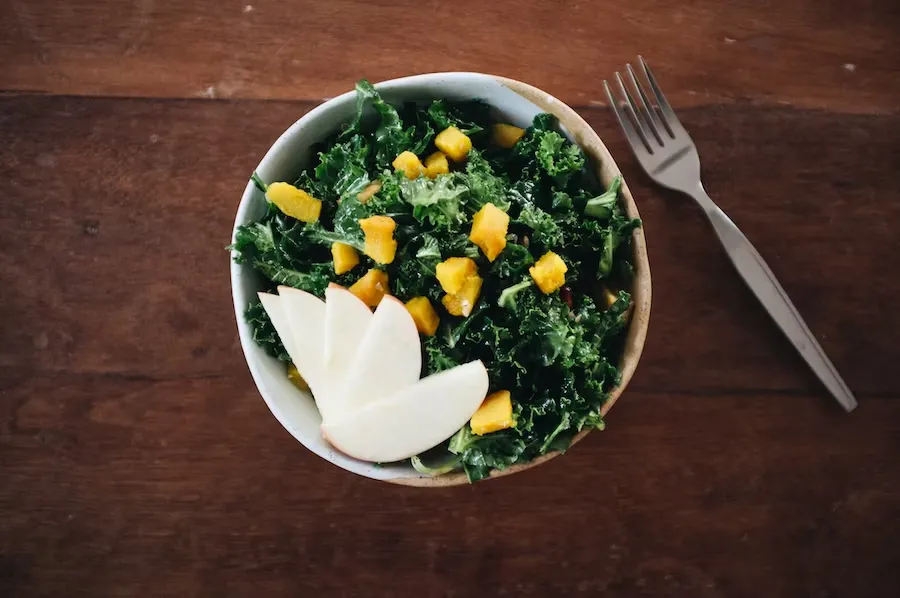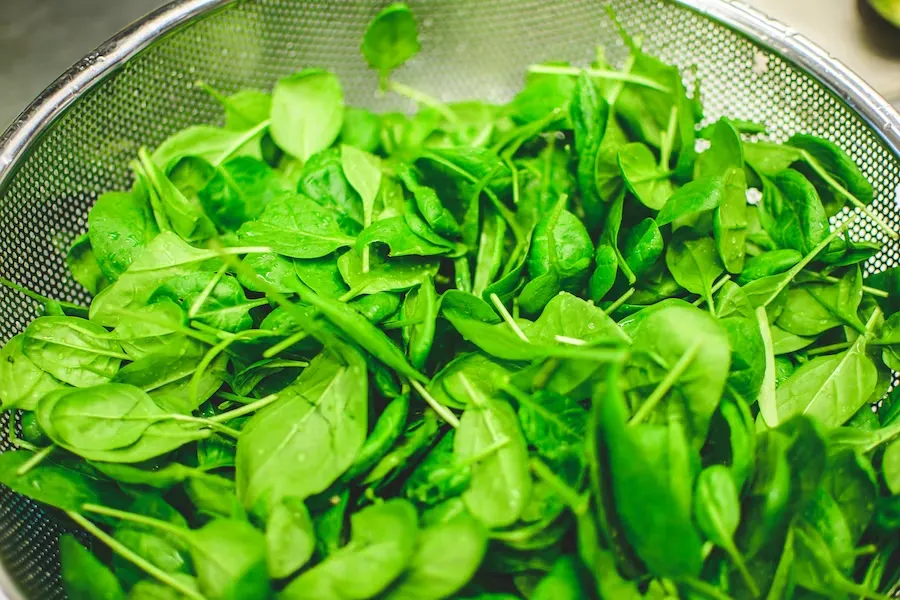Introduction
In the realm of vibrant and healthful eating, leafy greens stand out as nutritional powerhouses, each offering a unique blend of flavors and a myriad of essential nutrients. In this comprehensive guide, we delve into the world of leafy greens, exploring their individual characteristics, nutritional profiles, and potential health benefits. Let’s embark on a journey through the green wonders that can elevate your culinary experience and contribute to your overall well-being.
1. Arugula: Unveiling the Vibrant Green Elegance
Arugula, known colloquially as “rocket,” adds a burst of flavor to both hot cooked dishes and refreshing salads. Let’s explore the nutritional marvel that lies within this elegant green.
1.1 Nutritional Marvel of Arugula
Per 100 grams, arugula presents a nutritional powerhouse:
- Calories: 25
- Carbohydrates: 3.65g
- Fiber: 1.6g
- Fat: 0.66g
- Protein: 2.58g
Beyond its vibrant taste, arugula is a rich source of folate, vitamin C, and vitamin K. Dive deeper into its potential health benefits, including blood pressure regulation and cancer risk reduction.
2. Beet Greens: Elevating the Root’s Hidden Gems
Tied together in a bunch with long purple stalks, beet greens, the upper leaves of beets, often overshadow the root vegetable they protect. Let’s uncover the nutrient-rich gems within beet greens.
2.1 Nutrient-Rich Beet Greens
Per 100 grams, beet greens offer:
- Calories: 22
- Carbohydrates: 4.33g
- Fiber: 3.7g
- Fat: 0.13g
- Protein: 2.2g

These greens are a treasure trove of vitamins A, C, and K1, providing 35%, 33%, and a whopping 333% of the daily value, respectively. Delve into a detailed exploration of the potential benefits offered by beet greens.
3. Bok Choy: The Worldwide Hydrating Marvel
Commonly known as “Chinese cabbage,” bok choy transcends its Chinese origins, hydrating at over 95% water content. Let’s uncover the hydration and nutrition in harmony within bok choy.
3.1 Hydration and Nutrition in Harmony
Per 100 grams, bok choy boasts:
- Calories: 13
- Carbohydrates: 2.18g
- Fiber: 1.0g
- Fat: 0.2g
- Protein: 1.5g
This leafy green stands out with substantial amounts of vitamins C, K1, and A. Its exceptional nutrient density, coupled with minimal calories, makes bok choy a nutritional superstar.
4. Broccoli Rabe: Rapini’s Bitter Green Symphony
Characterized by long, slender stalks, broccoli rabe, or “rapini,” introduces a robust and earthy flavor, setting it apart from traditional broccoli. Let’s explore the nutritional harmony of broccoli rabe.
4.1 Nutritional Harmony of Broccoli Rabe
Per 100 grams, broccoli rabe offers:
- Calories: 22
- Carbohydrates: 2.85g
- Fiber: 2.7g
- Fat: 0.49g
- Protein: 3.17g
This bitter green not only exceeds 200% of the daily value for vitamin K1 but also delivers substantial amounts of vitamins A and C, folate, and manganese.

5. Chinese Broccoli (Gai Lan): A Culinary Delight in Every Stem
Known as ‘Gai Lan’ in China, Chinese broccoli offers a robust taste, with elongated stalks and dark green leaves. Let’s uncover the nutrient-rich properties of Chinese broccoli.
5.1 Nutrient-Rich Chinese Broccoli
Per 100 grams, Chinese broccoli provides:
- Calories: 26
- Carbohydrates: 4.67g
- Fiber: 2.6g
- Fat: 0.76g
- Protein: 1.2g
Distinct in flavor, Chinese broccoli stands out with high levels of vitamins A, C, K1, folate, and manganese.
6. Collard Greens: A Green Marvel with Global Appeal
Akin to kale, collard greens offer versatility in soups, stews, and side dishes, garnering popularity worldwide. Let’s explore the nutrient-rich composition of collard greens.
6.1 Nutrient-Rich Collard Greens
Per 100 grams, collard greens present:
- Calories: 32
- Carbohydrates: 5.42g
- Fiber: 4.0g
- Fat: 0.61g
- Protein: 3.02g
These deep green leaves are a powerhouse of vitamin K1, offering more than 364% of the daily value, along with rich amounts of vitamins C and K1.
7. Dandelion Greens: Crisp, Bitter, and Nutrient-Dense
With a crisp, bitter, and nutty flavor, dandelion greens find a place in salads and cooked dishes. Let’s explore the nutrient-dense properties of dandelion greens.
7.1 Nutrient-Dense Dandelion Greens
Per 100 grams, dandelion greens boast:
- Calories: 45
- Carbohydrates: 9.2g
- Fiber: 3.5g
- Fat: 0.7g
- Protein: 2.7g

In addition to their unique taste, dandelion greens provide substantial amounts of vitamin K1, vitamin A, and vitamin C.
8. Endive: A Leafy Symphony of Flavors
Endive, a typical leafy salad green, offers a symphony of flavors, ranging from crisp and slightly bitter to soft and mild, depending on preparation. Let’s unravel the nutritional symphony of endive.
8.1 Nutritional Symphony of Endive
Per 100 grams, endive provides:
- Calories: 17
- Carbohydrates: 3.35g
- Fiber: 3.1g
- Fat: 0.2g
- Protein: 1.25g
Rich in folate and vitamin K1, endive also offers good amounts of vitamins A and C, and the mineral manganese. Explore the nutritional benefits of escarole, one of endive’s main types.
9. Green Amaranth Leaves: A Nutrient-Rich Delight
With a mildly sweet, nutty, and earthy flavor, green amaranth leaves share characteristics with spinach, earning them the nickname “Chinese spinach.” Let’s explore the nutrient-rich delight within green amaranth leaves.
9.1 Nutrient-Rich Green Amaranth Leaves
Per 100 grams, green amaranth leaves offer:
- Calories: 21
- Carbohydrates: 4.11g
- Fat: 0.18g
- Protein: 2.11g
High in vitamin K1, manganese, and vitamin A, RAE, these leaves are a nutritional delight. Dive into a complete nutritional guide to explore more about green amaranth leaves.
10. Iceberg Lettuce: Crispy Refreshment in Every Bite
With its high water content and mild taste, iceberg lettuce adds a refreshing crunch to sandwiches and various dishes. Let’s take a snapshot of the nutritional composition of iceberg lettuce.
10.1 Nutritional Snapshot of Iceberg Lettuce
Per 100 grams, iceberg lettuce offers:
- Calories: 14
- Carbohydrates: 2.97g
- Fiber: 1.2g
- Fat: 0.14g
- Protein: 0.9g
While low in calories, iceberg lettuce provides a moderate amount of vitamin K, contributing to 20% of the daily value. Enjoy the crispiness and subtle taste in every bite.
Conclusion
In conclusion, this comprehensive guide unveils the diverse world of leafy greens, each offering a unique blend of flavors and a powerhouse of nutrients. Incorporate these greens into your diet for a vibrant and healthful culinary experience. Whether in salads, soups, or side dishes, these leafy wonders can elevate your meals and contribute to your overall well-being. Embrace the richness of nature’s greens for a healthier and more flavorful life.
Read Also:- Effortless Eats: Dive into Wellness with Swift Taco Magic




